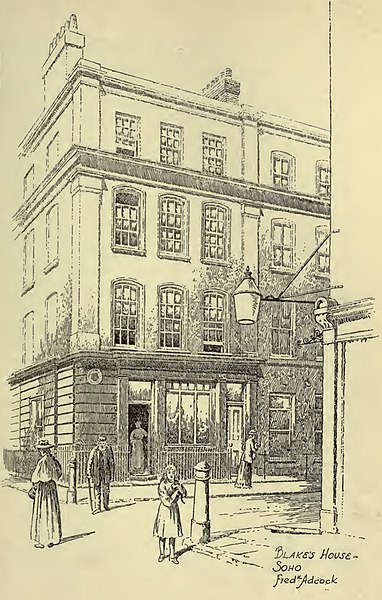The Marriage of Heaven and Hell
The Marriage of Heaven and Hell is a book by the English poet and printmaker William Blake. It is a series of texts written in imitation of biblical prophecy but expressing Blake's own intensely personal Romantic and revolutionary beliefs. Like his other books, it was published as printed sheets from etched plates containing prose, poetry, and illustrations. The plates were then coloured by Blake and his wife Catherine.
The title page of the book, 1790, copy D, held by the Library of Congress
Plate from Marriage of Heaven and Hell, depicting Nebuchadnezzar.
William Blake was an English poet, painter, and printmaker. Largely unrecognised during his life, Blake is now considered a seminal figure in the history of the poetry and visual art of the Romantic Age. What he called his "prophetic works" were said by 20th-century critic Northrop Frye to form "what is in proportion to its merits the least read body of poetry in the English language". While he lived in London his entire life, except for three years spent in Felpham, he produced a diverse and symbolically rich collection of works, which embraced the imagination as "the body of God", or "human existence itself".
Portrait by Thomas Phillips (1807)
28 Broad Street (now Broadwick Street) in an illustration of 1912. Blake was born here and lived here until he was 25. The house was demolished in 1965.
The archetype of the Creator is a familiar image in Blake's work. Here, the demiurgic figure Urizen prays before the world he has forged. The Song of Los is the third in a series of illuminated books painted by Blake and his wife, collectively known as the Continental Prophecies.
Oberon, Titania and Puck with Fairies Dancing (1786)






